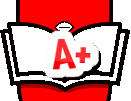Florida Unit Plan
Florida Unit Plan
Order 100% Plagiarism Free Plan Now
Identify the content standards, specific benchmarks, and checkpoints on which you will focus. You may use national content standards or state standards.
The content is aligned to meet the expectation identified from the data. The teacher ensures that it is compatible with Florida Standards suitable for the 4th grade level and content area for which it is established. It targets a continuing model or proficiency or a subset of information and skills. Learners should demonstrate their skills; high and low achievers. Present access and prospects for all learners, in addition to students that are impaired in some way (Barton, 2012).
List clear objectives, results, or learning outcomes on which you will focus your instruction and assessments, making sure that they are aligned to the national or state content standards targeted for your classroom’s grade level. State (Florida).
Florida Unit Plan
Order 100% Plagiarism Free Plan Now
During the 2015/16 academic years, my 5th grade English learners will enhance their competence to develop arguments that underpin assertions and apply textual evidence to underpin claims and refute counterarguments. All 5th graders will improve when it comes to the collective score, based on the district argumentation rubric. More than 75 percent of my learners will attain at the proficiency echelon (level 3) on the 4-point rubric (Kifer, 2011).
Design a pre-assessment for the unit, based on the student’s needs identified from baseline data for your classroom (make up the data)
Focus 1 2 3 4
Controlling Idea 0% 15% 80% 5%
Composition Writing 15% 80% 5% 0%
Development
20% 70% 10% 0%
Organization
0% 20% 800% 0%
Use of Vocabulary
20% 15% 60% 5%
Heteronyms 10% 20% 70% 0%
Florida Unit Plan
Order 100% Plagiarism Free Plan Now
As of the first week, the teacher evaluates formative review from the instructional pedigree as well as the final product to determine that learners, in entirety, had difficulties with vocabularies in developing compositions that are coherent (Whiting et al. 2013). The teacher will identify if learners had a problem with the use of heteronyms (the use of words with similar spelling but different meanings). The teacher reviews of all the challenges students face, and make changes for the academic year 2015/16 where all students are expected to achieve measurable progress in the use of vocabularies and heteronyms. All learners will move at least one level and seventy five percent of learners will attain at the 3 or higher level in writing composition.
Develop multiple assessments for the unit. The assessments must include all of the following:
Standardized Assessments
Standardized assessments can be in form of;
· The teacher develops an achievement assessment during week two to assess the level of understanding learners have acquired in accordance with learning objectives. For instance, intelligence scales will be used in assessing IQ.
· Scholastic: The teacher uses Aptitude assessment to evaluate collective ability of learning as well as predicting performance. For instance, SAT will used to evaluate vocabulary skills.
Florida Unit Plan
Order 100% Plagiarism Free Plan Now
Self-assessments
The teacher uses questionnaires at week two to assess students’ performance with the objective of enhancing skills. The results determine whether or not teaching methods should be altered. The teacher can use quantitative research whereby learners become participants (Kifer, 2011). The educator will then collect feedback via questionnaire to determine the effectiveness of the teaching model. Survey is critical because it obtains a detailed performance assessment based on how teaching is conducted. The views help the teacher in changing their teaching approaches (Barton, 2012).
Formative assessments
Quizzes: The educator adopts the quiz approach to determine the students’ comprehension skills such as verbs and syntax
Exit slips: The educator uses small papers to impute or respond to questions from the student before moving to the next class (Kifer, 2011). For the teacher to have a grasp of whether or not students have a strict understanding of various concepts, the responses will form the basis.
Demonstrate how different assessments may be used for various purposes to meet the goals of formative, summative, standardized, or self-assessments.
Florida Unit Plan
Order 100% Plagiarism Free Plan Now
At week three, the educator evaluates students by way of a rating scale, questionnaires, observations and tests. This approach is aimed at ensuring objectives of formative, summative, standardized, or self-assessments in various ways are realized including;
· In planning for the unit, the educator might make content errors then fails to correct learners’ errors
· In displaying extensive understanding of relevant concepts and the manner in which they are related to other subjects
· In demonstrating comprehensive understanding of a wide range of pedagogical techniques relevant to learners learning ability
· When demonstrating understanding of concepts and their relationships
· When reflecting awareness with a range of effective pedagogical methods
Explain the purpose of utilizing assessment evaluation in a teaching unit.
The teacher will adopt assessment evaluation in teaching the English unit owing to its effectiveness in ranking learners (Guskey, 2011). Based on results the assessment will help the educator to enhance quality of their class and align assessments with learning objectives.
Describe how you would approach a summative assessment for the teaching unit that shows attention to formative assessments. Provide an example of a formative and a summative assessment.
Florida Unit Plan
Order 100% Plagiarism Free Plan Now
For the teacher to enhance quality and improve student ability, they need to implement embedded formative assessment at week five This will ensure questions, learning goals, feedback, group work are aligned to ensure a proficient classroom environment. The assessment will also provide necessary data to help in highlighting the intricacy of changing teachers’ practice. The assessment will also advance the sharing of teaching skills.
Quick Formative Assessment: The educator will evaluate the level of learning using quick formative assessment to determine whether or not learners have comprehended what was taught (Guskey, 2010). To ensure students have understood these activities will be carried by the teacher;
· Outcome sentence: the educator uses this technique to get various responses from the student.
· Headlines: The educator asks students to write down captions that were taught in class.
· Pair share: The educator groups students in two for purposes of sharing knowledge.
· Think-Write-Share: The educator gives students more time to re-organize their ideas.
· Quick Write or draw: The educator gives students a topic to write about and timing them to understand how far they can reach.
· SOS: The teacher involves learners writing quick statements or views in accordance with declaration and eventually a support them.
Florida Unit Plan
Order 100% Plagiarism Free Plan Now
· Grade self: The teacher allows learners to provide themselves with in-progress rating and substantiate the basis of getting such grades.
Summative Assessments
Summative assessment comprises of;
· Exams; the teacher uses exams in quantifying what learners know and what they do not understand. Moreover, exams are used in evaluating learning and acts as a standard for comparing issues like class aggregates and scores that tend to demonstrate curriculum quality (Wiggins, 2009).
· Graded projects: The teacher uses this technique occasionally; nevertheless they lack an instant impact on the quality curriculum. For example, English example on verbs at the end of the semester helps the teacher under the degree of students’ understanding.
References
Barton, P. E. (2012). Staying on course in education reform. Princeton, NJ: Statistics & Research Division, Policy Information Center, Educational Testing Service.
Guskey, T. R. (2010). Twenty questions? Twenty tools for better teaching. Principal Leadership, 1(3), 5–7.
Guskey, T. R. (2011). Evaluating professional development. Thousand Oaks, CA: Corwin Press.
Kifer, E. (2011). Large-scale assessment: Dimensions, dilemmas, and policies. Thousand Oaks, CA: Corwin Press.
Whiting, B., Van Burgh, J. W., & Render, G. F. (2013). Mastery learning in the classroom. Paper presented at the annual meeting of the American Educational Research Association, San Francisco.
Wiggins, G. (2009). Educative assessment. San Francisco: Jossey-Bass.
Florida Unit Plan
Order 100% Plagiarism Free Plan Now










